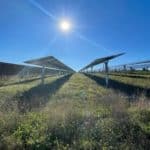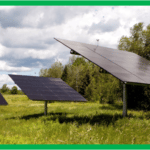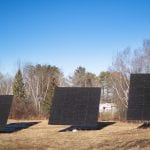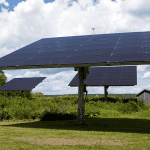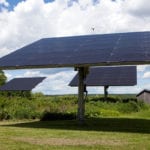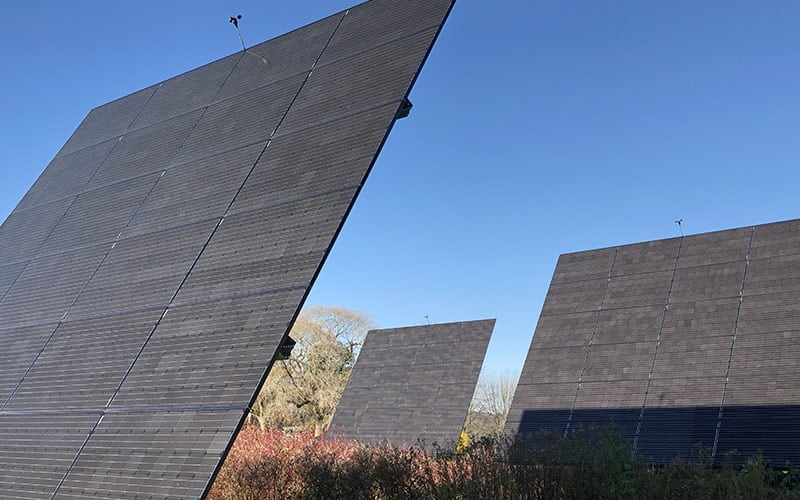
Thanks to policies passed in 2019, Maine is on the cusp of a new era of solar power development. From rooftop arrays that power individual households and businesses, to grid-scale projects that provide power to customers across the electricity grid, Maine is realizing solar’s many benefits: good jobs, lower energy costs, and clean energy.
With these tremendous opportunities comes potential conflict with Maine’s wildlife and natural resources. Like any new land use or development, if solar is not thoughtfully sited and operated, it could displace wildlife habitat and otherwise unduly impact Maine’s natural resources.
In partnership with solar developers, municipal planners, and environmental and agricultural organizations, Maine Audubon has created a Solar Toolkit, a suite of resources to guide individuals, municipalities, and decision-makers toward realizing the benefits of solar, while siting projects with wildlife and habitat in mind.
Resources
This document, authored by Maine-based environmental and agricultural organizations, outlines best practices to avoid and/or minimize impacts to wildlife, farming, and critical natural resources from solar development (download here).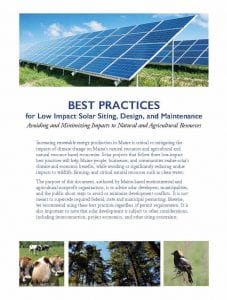
This document provides detailed information to help solar developers plant native plants under and around their projects. The guide is for solar developers, landscape architects, and other professionals and individuals who are interested in designing solar arrays that maximize co-benefits to wildlife and wildlife habitat through native plantings and site-specific design and management considerations. (View or download here)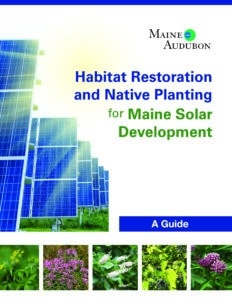
This document describes and models two land-use tools Maine municipalities may use to permit small-, medium-, and large-scale solar energy systems, including both ground-mounted and roof-mounted solar installations. The purpose of this document is to assist Maine municipalities in supporting development of solar energy systems in ways that address the needs of their community (download here).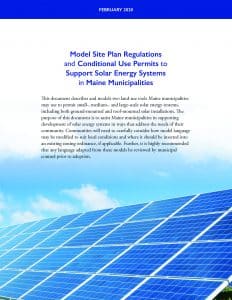
This document was created to provide answers to common questions about solar development that have been raised by municipal officials, landowners, and others considering larger solar projects for their own use or in their communities (download here).
> Click here for the Renewable Energy Siting Tool
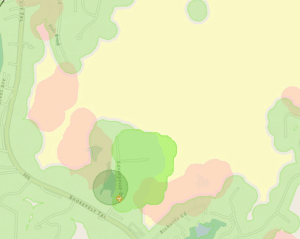
Other Resources
Report: Renewable Energy and Wildlife in Maine: Avoiding, Minimizing, and Mitigating Impacts to Wildlife and Habitat from Solar, Wind, and Transmission Facilities: Executive Summary (PDF)
Report: Renewable Energy and Wildlife in Maine: Avoiding, Minimizing, and Mitigating Impacts to Wildlife and Habitat from Solar, Wind, and Transmission Facilities: Full Report (PDF)

